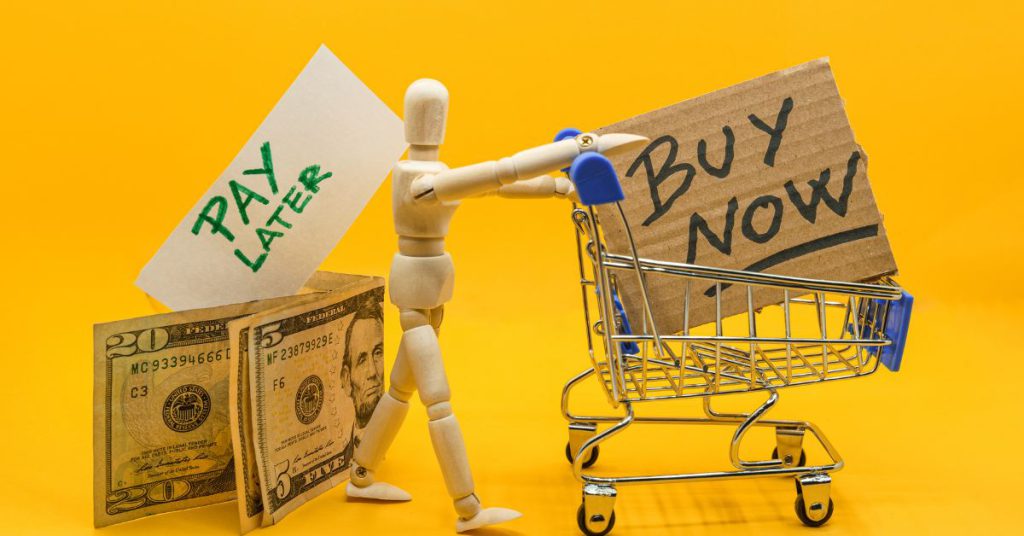Our Social Media
Our Social Media

Running a business in Canada means dealing with a payment landscape that seems to evolve every few months. One day your customers are tapping their cards, the next they’re asking if you take payments through their phone or even installments. It can be a lot to keep track of. Here we break down the key payment trends Canadian owners should watch this year, and (crucially) what you can actually do about each trend in your day-to-day business.

Not so long ago, many shoppers still swiped cards or paid cash. Now, most Canadians prefer to tap and go. In fact, digital payments made up 86% of all transactions by volume in 2023, and over half of all transactions were done via contactless tap. What does that look like in practice? Customers are paying with a quick tap of a card, smartphone, or even a smartwatch. Virtually every payment terminal in Canada now supports tap payments as of 2023, about 84% of merchants accept contactless cards or phone payments (nearly all new checkout terminals come with that capability). This has become the norm, and Canada is even ahead of the U.S. in embracing “tap-to-pay” tech. People love it because it’s fast and convenient, and it was also encouraged by hygiene concerns during the pandemic.
What to do: If you haven’t already, double-check that your point-of-sale system or card reader is enabled for contactless payments (chances are it is). Make sure you clearly indicate to customers that you take tap, Apple Pay, Google Pay, and so on maybe put a little sign or sticker at the counter. It reassures people they can pay the way they prefer. Also consider that contactless isn’t just for retail stores: if you sell at a farmer’s market or pop-up shop, use a mobile card reader so you don’t miss sales from folks who don’t carry cash. Basically, meet your customers where they are. They’ve gotten used to quick, tap-and-go payments, so any friction at checkout and perhaps they might walk away. A smooth payment experience builds trust (nobody likes fiddling with a sluggish machine or a card that won’t swipe). In short, keep it simple and fast your customers will thank you.
Ever notice how fewer people talk about paying by cheque lately? It’s because electronic money transfers have largely taken over, especially for businesses. Interac e-Transfer has become a workhorse for moving money in Canada. According to Payments Canada, 92% of Canadians know about e-Transfers and over 80% used them in the past year. In fact, e-Transfers and other online transfers (like PayPal) just surpassed cheques in total volume for business payments in Canada. That’s a big shift – it means even for B2B payments, companies are saying “let me send you an e-Transfer” instead of writing a cheque. The convenience and speed (and maybe the fact that younger business owners hardly even use cheques anymore) make electronic transfers the go-to in many cases.
And coming very soon is Canada’s new Real-Time Rail (RTR) system, which promises to take speed to the next level. Once it goes live, RTR will let payments of all kinds (potentially between any banks or payment providers) happen in seconds, 24/7. No more waiting for hours or days for funds to clear it could be instantaneous. This system has been in the works for a while (facing some delays as they iron out the kinks), but the dedication is there to get it launched securely. The end goal is to make moving money faster, safer, and more accessible for everyone. For business owners, that could mean getting customer payments or supplier payments immediately, even on weekends or holidays. It’s a bit technical behind the scenes, but the takeaway is: real-time money movement is on its way to becoming standard.
What to do: Start by leveraging what’s already here. If you’re still issuing paper invoices with “Net 30” terms and waiting for cheques, consider switching to electronic invoices that request Interac e-Transfers or online payments. You’ll likely get paid faster and your customers will probably appreciate the ease. Many accounting and invoicing softwares in Canada can automatically generate an e-Transfer request. Also, talk to your bank or payment processor about real-time payment capabilities. Some banks are already integrating with faster payment networks (for example, some support instant transfers). While Real-Time Rail isn’t live as of this writing, keep an ear out for news when it launches, see if your bank offers it and be ready to take advantage. The ability to send or receive money instantly can help your cash flow (no more waiting for funds to become available), so you’ll want to jump on it once available. Essentially, the trend is moving toward speed and convenience in payments, so align your processes to match that.

Artificial intelligence isn’t some far-off idea in the payments world it’s already making a mark in how transactions and finances are handled. Big companies and banks have been using AI for a while, and now these tools are filtering down to smaller businesses too. Why does AI matter for payments? A couple of examples: banks and payment processors are using machine learning to detect fraud in real-time (ever gotten a call or text about a “suspicious transaction” seconds after it occurred? That’s AI at work). AI-driven chatbots are also handling customer service questions 24/7, answering “Where’s my refund?” at midnight. All this makes transactions safer and service faster. In fact, roughly half of businesses in Canada (49%) plan to implement some form of generative AI to boost their efficiency things like automated payment processing, smarter fraud detection, and personalizing the customer experience. It’s not just for the big players; AI tools are becoming more accessible to small and medium businesses as well.
For instance, as a business owner you might use an AI-based system to automatically reconcile your sales at the end of the day, or to forecast your cash flow for the next quarter by analyzing patterns. Cash flow management itself is getting a boost from AI instead of poring over spreadsheets, tools can now predict when you might run short or when a big expense is likely, helping you prepare. (That’s actually the idea behind our own Vitality Cash platform using AI to spot patterns and give smart forecasts but there are other tools out there too.) The point is, AI can take some of the financial guesswork and grunt work off your plate. It’s like having a smart assistant keeping an eye on your money.
What to do: You don’t need to be a tech expert to start benefiting from AI in your business finances. Begin with simple automation for example, use software that automatically sends out invoices and payment reminders, or that flags unusual spending on your accounts. Many cloud accounting systems have built-in AI features now (or they integrate with add-ons). If you’re concerned about fraud (and who isn’t?), ask your payment processor what fraud prevention measures they use. The good ones will have AI monitoring transactions in the background to catch sneaky fraudulent payments before they hit you. Consider exploring tools like AI-driven cash flow apps or budgeting tools that learn from your data these can help predict when lean months are coming or when it might be safe to invest in growth. In short, don’t be afraid to let tech handle some tasks. It can feel odd at first to trust an algorithm, but if it saves you hours of work or prevents one bad transaction, it’s probably worth it. Keep an open mind: start small, maybe with one feature, and build from there. Your future self (with extra time and fewer headaches) will thank you.

You’ve probably noticed the option to “buy now, pay later” popping up when you shop online and even in some stores. BNPL services like Afterpay, Klarna, or Affirm let customers split a purchase into a few smaller payments instead of paying all at once. In Canada, this BNPL trend is gaining significant traction, especially for bigger ticket items. Shoppers enjoy the flexibility: they can take home a product today and pay it off over, say, four installments. For businesses, offering BNPL can potentially boost sales customers might buy more if they don’t have to pay the full amount immediately. By 2022, about 6% of all e-commerce payments in Canada were already happening through BNPL, double the share from the year before, and that percentage is expected to keep growing. More and more retailers are adding these options at checkout to cater to customer demand. It’s not just for online-only businesses either; even some traditional retailers are putting up signs at the cash register like “Take it home today, pay in 4 easy payments.”
But it’s not a pure win-win without some cautions. If you offer BNPL, the customer pays over time, but you as the merchant usually get paid upfront by the BNPL provider (minus a fee). Those fees can be a bit higher than normal credit card processing fees, so it’s something to weigh. Also, there’s a subtle psychological aspect: while BNPL can encourage people to buy more, it might also encourage some to overspend and later struggle to pay their installments. That could lead to more customer service headaches if folks default or have issues though the BNPL company usually takes on the credit risk, not you. Still, it can reflect on customer satisfaction if not handled well.
What to do: If you sell products or services where the price is more than an impulse-buy range (for example, electronics, furniture, expensive gadgets, or even higher-end cosmetics and apparel), consider adding a BNPL option at checkout. Many e-commerce platforms let you integrate BNPL providers pretty easily. It could give you a bump in conversion rates some customers specifically look for those options. Before diving in, compare a couple of BNPL providers. Look at the fees they charge you, the terms for customers, and how much hand-holding they do if a customer misses a payment. You want a reputable provider that treats customers fairly (to keep your brand image positive). Also, make sure your bookkeeping accounts for these payments correctly. If you get, say, $95 on a $100 sale because of BNPL fees, record it right and know your margins. As with any new payment method, maybe start as a trial: enable it for a few months and see if sales increase enough to justify the fees. Pay attention to customer feedback do they use it and like it, or does it cause confusion? BNPL isn’t a must-have for every business, but if your customers are asking for more flexibility at checkout, it’s an option worth exploring.
“Open banking” is a buzzword you might’ve heard thrown around in fintech circles. It basically means banks and financial institutions letting customers securely share their financial data with third-party apps or services (with permission, of course). Why should you care? Because it could spawn a whole new wave of financial tools and integrations that make running your business easier. Canada has been moving slowly on open banking, but things are about to pick up: the government is preparing to launch the first phase of open banking in early 2026. That’s not far off. The idea is that you, as a banking customer, will have more control to authorize trusted apps to access your data for example, an app that can see your transactions (across different banks) and help you budget or a lending platform that can quickly verify your income and offer a better loan rate. For small businesses, it could mean easier switching between banks for better services, or linking your bank account with accounting software in real-time without clunky manual exports. The benefits for small businesses could be big, as open banking is expected to spur competition and innovation in financial products. Imagine being able to plug all your financial accounts into a dashboard that analyzes fees and suggests cheaper options, or automates your cash flow forecasting by pulling bank data directly those kinds of things become more feasible in an open banking world.
Now, it’s worth noting Canada’s approach is cautious they want to ensure everything is secure and reliable as they roll this out. Other countries (like the UK) are ahead, and they’ve shown that open banking can indeed bring positive changes like better loan terms for small businesses, because lenders can easily see verified cash flow data (with your consent) and offer tailored rates. In short, open banking is about giving you more choice and flexibility with financial services by safely sharing data where you want to.
What to do: For now, the main action item is stay informed. As the first phases of open banking kick off (possibly starting with limited testing in 2025 leading into the 2026 launch), keep an eye on news from your bank or the government about what’s available. When it does go live, be ready to try out new services that could help your business. For example, if there’s an app that can connect to all your bank accounts and do a cash flow analysis or find cost savings, you might give it a shot (assuming it’s from a credible provider). Also, consider your current financial tools are they likely to embrace open banking? Many Canadian fintech apps are surely gearing up for this; check if your accounting or budgeting software has plans to integrate open banking for more automatic updates. Preparation is mainly about awareness: knowing that change is coming so it doesn’t catch you off guard. Maybe you don’t need to do anything this second, but have it on your radar. The businesses that adapt first could get a jump on things like more efficient loan approvals or slicker money management. Plus, just being willing to embrace new financial tech can often put you a step ahead of competitors still doing things the old way. In summary, open banking could be the key to unlocking easier financial management for your business when the door opens, be ready to walk through. (We’re certainly excited about it, since it will likely allow platforms like Vitality Cash to offer even more seamless integrations for our users.)
Staying on top of payment trends can feel like a full-time job on its own, but it truly pays off (sometimes literally, in saved fees or higher sales). The main thread through all these trends is meeting customers’ expectations and keeping your business financially agile. Canadians are quick to adopt new convenient payment methods – from tapping a phone to splitting a purchase into installments and they appreciate businesses that keep up. That said, you don’t need to jump on every bandwagon. Consider which trends align with your customers and your business model. Maybe your clientele isn’t asking for cryptocurrency payments (yet), but they definitely expect you to accept debit tap and e-Transfers; focus on what moves the needle for you.
At the end of the day, the goal is to make paying easy and managing those payments even easier on the back end. Use the tools at your disposal (many of them are more affordable than you’d think, or even built into services you already use). And don’t be afraid of a bit of trial and error. Think of it as an ongoing conversation with your customers and your financial technology a tweak here, an upgrade there, and you’ll find the setup that works best. Keep watching these trends as the year unfolds because the only constant in payments (and in business) is change. By staying informed and adaptable, you’ll not only meet the standards of today but also be ready to seize the opportunities of tomorrow’s payment landscape. Your Canadian customers and your future cash flow will be better off for it.
An AI-integrated cash flow management solution designed to empower SMBs with predictive insights, comprehensive financial control, and streamlined operations.

Copyright © 2024 Vitality Cash. All Rights Reserved.